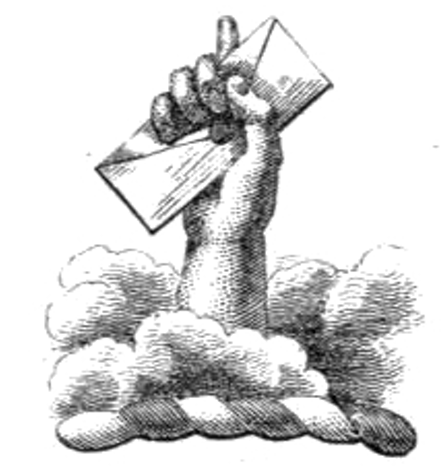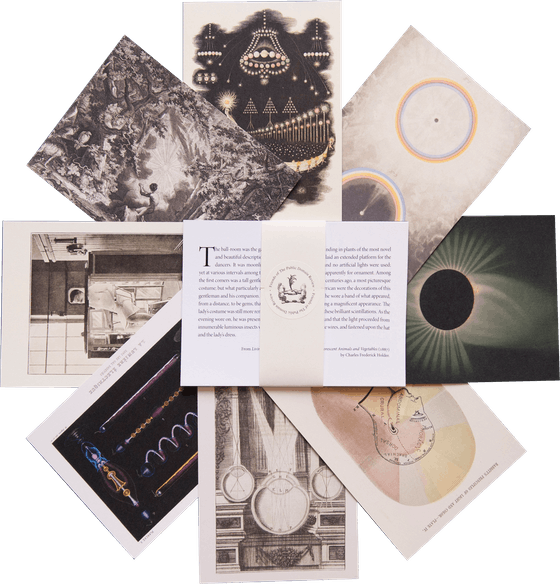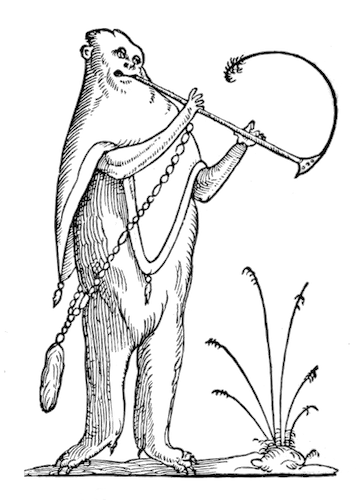
Splitting Hairs Chinese Immigrants, the Queue, and the Boundaries of Political Citizenship
As Chinese immigration to California accelerated across the 19th century, the hairstyle known as the queue — a long, braided pony tail — became the subject of white Americans’ fascination, disgust, and legal regulation. Sarah Gold McBride explores why hair served as an index of political subjecthood, and how the queue exposed cracks in American norms regarding gender, economy, and citizenship.
July 9, 2025
A meal in China photographed by Lai Afong, who ran the most successful photography studio in the late Qing dynasty, ca. 1880 — Source.
As the French sculptor Frédéric-Auguste Bartholdi and his team worked to construct the Statue of Liberty in the early 1880s, a brash illustrated newspaper thousands of miles away envisioned what the equivalent statue might look like if it were located in the bay of San Francisco instead. This mockup, published on The San Francisco Illustrated Wasp’s back cover in 1881, shared some elements with Bartholdi’s final design; both featured a single figure standing on top of a tall pedestal, draped in layers of loose fabric, with one arm aloft. There was, however, one major difference: Wasp cartoonist Thomas Keller fashioned his central figure not as an allegorical female symbolic of liberty, but as a Chinese male.
The most distinctive feature of the figure at the center of Keller’s design is his hair, which unfurls high above his left shoulder, curving through the air like a snake through sand. This is a queue: the long, braided, black ponytail that had been mandated by China’s Qing government for men of Han ethnicity since the seventeenth century.1 During the nineteenth century, most Chinese immigrants to the United States were Han men who wore queues. By the time this cartoon appeared in the San Francisco Wasp, the queue had become the subject of white Americans’ fascination, disgust, and even regulation: for example, an 1876 San Francisco law, which required all men sent to the county jail to have their hair shorn to a length of one inch, was overturned three years later by a federal circuit court. Despite its purportedly race-neutral language, the law so transparently targeted Chinese men that, the court ruled, it violated the equal protection clause of the Fourteenth Amendment to the Constitution.2 By the 1880s, the queue had become not just synonymous with Chinese people in America, but — like the Statue of Liberty herself — symbolic of broader conversations about American citizenship and belonging.
“A Statue for Our Harbor”, illustration by George Frederick Keller published in the November 11, 1881 issue of The Wasp. The beams of light emanating from behind the statue’s head read, from right to left: FILTH, IMMORALITY, DISEASES, RUIN TO WHITE LABOR. The figure holds an opium pipe in its left hand — Source.
What was it about the queue that made it not merely a curiosity but also a body part capable of carrying such significant political meaning? It wasn’t the queue’s color or styling that mattered to white Americans: it was its length. In fact, when Keller drew a statue for The Wasp with hair so long that it stretched more than half the length of his body, Keller was building on a two-hundred-fifty-year tradition of European-descended religious leaders, political elites, government officials, scientists, labor organizers, newspaper editors, and other cultural authorities being baffled, bedeviled, impassioned, and enraged by long hair on men — including both the hair that grew from their heads and false hairpieces worn on top.
During the first century of English colonization of North America, English colonists’ perspective on long hair was grounded in a worldview, informed by humoralism, in which hairstyles were the most important evidence of a person’s identity in their community. Many European-descended, African-descended, and Indigenous men (and most women) wore their hair long past their ears or shoulders in the seventeenth and eighteenth centuries. However, colonial elites, especially New England’s Puritan leadership, condemned men who wore this hairstyle because they believed it communicated their indifference or even hostility to Christian faith; citing Biblical mandates that categorized long hair as a sign of women’s subjugation to men, Puritan leaders criticized men whose hairstyles suggested unmanly subjugation. Starting in the eighteenth century, hair’s biological qualities — such as texture and color — started to become very important to the way European-descended people understood the meaning of hair, and, in particular, hair’s role as an index of racial and gender difference.
Indeed, this growing emphasis on hair’s biology was central to a broader shift in the cultural and scientific understanding of hair as an integral part of the human body. Increasingly, Americans understood their hair to be a body part — not the excrement of the humoral body, as it had been understood in European culture for centuries. Even though hair length — whether one’s hair was cut frequently to maintain its short length, or whether it was left to grow long — was a hair style, by the early nineteenth century many scientific authorities pulled this style into the realm of biology, too, naturalizing long and short hair as biologically inevitable along lines of both gender and race. Claims that women’s hair naturally grew long, while men’s hair naturally stayed short, were implicitly (and sometimes explicitly) restricted to European-descended women alone, excluding African-descended women from what cultural authorities believed constituted inherent feminine beauty. These profound shifts in the definition and cultural meaning of hair were slow, piecemeal, and contested during the eighteenth century, yet by the first decades of the nineteenth century, hair’s biological significance had become a broadly shared cultural narrative.
Wood engraving by an unknown artist titled “Chinese Life in California — A Hairdresser’s Saloon”, ca. late 19th century — Source.
When Chinese immigrants began arriving in the United States in the late 1840s, with men wearing their hair in long queues, hair length’s gender binary was tested in a major way. Of all the new immigrants in the mid-nineteenth century, when immigration rates spiked for the first time in the nation’s history, Chinese people received the most virulently xenophobic treatment — and, already forbidden from naturalized citizenship, became subject to the country’s first-ever laws restricting immigration along racial lines: the Page Act of 1875 and the Chinese Exclusion Act of 1882.3 Proponents of restrictive legislation cited Chinese laborers’ supposed extraordinary productivity (and the threat it posed to white labor) as justification for their exclusion — yet at the same time, Chinese men were also derided for their supposed deficient masculinity. The feature that could hold, at once, these contradictory characterizations was the queue — and it is the queue that also shows how hair’s legibility as an index of the racial and gender borders of belonging could also be deeply unsettled.
The first Chinese immigrants came to California, like many other immigrants and migrants, after the discovery of gold in 1848. Once gold mining declined after 1853, many Chinese workers were recruited to construct the transcontinental railroad, and following its 1869 completion, most settled in San Francisco and sought work in the city’s industries.4 Chinese people never made up more than 10 percent of the city’s population during the nineteenth century, but because of their unusual demographics — most Chinese immigrants were adult men, with few women and fewer children — virtually all Chinese people who lived in San Francisco were de facto competitors with job-seeking white men.5 With four times as many men in California as there were jobs available, white men perceived Chinese laborers as a visible embodiment of their own anxieties. Moreover, in spite of their small numbers, Chinese laborers were dominant in some industries: in 1871, for example, Chinese workers produced 50 percent of the state’s boots and shoes.6
 Scroll through the whole page to download all images before printing.
Scroll through the whole page to download all images before printing.“The Pigtail Has Got to Go”, cover illustration for the October 19, 1898 issue of Puck. The text on the queue reads “worn-out traditions”; Lady Liberty, whose cap reads “civilization” and whose robes depict trains and electricity, wields scissors inscribed with “19th-century progress” — Source.
 Scroll through the whole page to download all images before printing.
Scroll through the whole page to download all images before printing.“Capital Stocks”, cover illustration for the March 31, 1882 issue of The Wasp. The stereotypical Chinese figure is labeled “The White Labor Destroyer”; his limbs are in stocks labeled “Anti-Chinese Bill” that are secured with a US Senate lock. Senator Miller, an advocate for the 1882 Chinese Exclusion Act, presides over the scene — Source.
Beyond the threat posed to the labor market, however, white critics in the popular press claimed that Chinese men were at odds with norms of white American masculinity — and, therefore, worthy of condemnation and eventually exclusion. These critics marshaled many supposedly damning justifications for their beliefs: Chinese men largely immigrated to the United States as bachelors and did not create families, as adult men should; they performed feminine-coded labor in laundries, restaurants, and domestic service (no matter that state labor laws and threats of local violence made these jobs the only possibilities for many Chinese laborers); and, by supporting the immigration of Chinese women sex workers — far more a moral panic than a demographically significant reality — they threatened American women and womanhood.7 Chinese men’s bodies, critics argued, testified to their supposedly inferior masculinity. While some critics denigrated Chinese men with gendered wisecracks about their clothing — for example, “that garment of his which passes for his ‘pants’” — racialized critiques of Chinese men’s masculinity primarily focused on their hair.8
Few records of nineteenth-century America better illustrate contemporary white attitudes toward Chinese immigrants — and the centrality of their long hair to this perception — than The San Francisco Wasp, an illustrated weekly newspaper published from 1876 to 1941 that featured colorful, often satirical illustrations on its front cover, back cover, and two-page centerfolds. At its peak in the 1880s, The Wasp was the most widely read newspaper on the West Coast. It was also in this decade that, under editor Ambrose G. Bierce The Wasp’s signature cartoons became singularly, even obsessively, focused on a single subject: opposition to Chinese immigration and hostility toward Chinese immigrants.9
 Scroll through the whole page to download all images before printing.
Scroll through the whole page to download all images before printing.“The Coming Man”, illustration by George Frederick Keller from the May 21, 1881 issue of The Wasp. The Chinese figure’s hand is labeled MONOPOLY and hovers over various economies: clothing factories, shirt manufacturing, “box factory”, Cuban cigars, underwear, and laundries — Source.
 Scroll through the whole page to download all images before printing.
Scroll through the whole page to download all images before printing.“Judge Righteous Judgment”, illustration from the August 9, 1879 issue of The Wasp satirising Supreme Court justice Stephen Field, who, in 1879, overturned a law that discriminated against queues. In the top right panel, Sheriff Nunan is shown clipping off a queue, a common practice at the time in Californian prisons — Source.
The Wasp’s illustrations were fundamental to its function as an organ of public opinion, particularly on the issue of Chinese immigration. Indeed, the newspaper’s editorial staff firmly believed that its full-page and centerfold cartoons were not merely supplemental to its articles or illustrative of its text — they were the newspaper’s central purpose and its strongest vehicle for communicating its values. As one 1878 issue put it, “Our doublepage illustration this week requires but little explanation. . . . Our artist condenses the whole Chinese question into a picture, and does it in such a manner that everybody can understand it at sight.”10 This was precisely the value of an illustrated newspaper: it condensed entire situations into bold, graphic images that could be comprehended even by people who did not (or could not) read its text.
Through these illustrations, The Wasp visually racialized and gendered Chinese men’s bodies with an almost mind-numbing repetition. While the newspaper used detailed lifelike illustration techniques to depict famous contemporary figures like railroad magnates Charles Crocker and Leland Stanford, its illustrations of Chinese people relied instead on stereotype.11 Rarely, if ever, did a specific Chinese individual appear in a Wasp cartoon. Instead, a standard caricature of Chinese men populated the newspaper’s pages, signaled by three visual signs: loose clothing, thick-soled shoes, and a queue. Thanks to their near-weakly repetition, these signs became so conflated with Chinese identity that they could even be used satirically as a form of racial drag — to suggest, as an 1882 cartoon did, that President Chester A. Arthur and his cabinet were too sympathetic to Chinese interests because Arthur had vetoed the first version of the Chinese Exclusion Act. (He eagerly signed its second version just one month later.)12
“Our New Cabinet at Washington”, illustration by George Frederick Keller from the April 28, 1882 issue of The Wasp. President Chester A. Arthur (mockingly labeled here as “Ah Ling Arthur”) and his cabinet are depicted wearing the clothes and hairstyles of Chinese immigrants in 1880s San Francisco — Source.
“Immigration, East and West”, illustration from the August 26, 1881 issue of The Wasp — Source.
More so than the other signs of Chinese identity, however, it was the queue that The Wasp’s cartoonists illustrated most often and by which they were the most obsessed and perplexed. This preoccupation is consistent with the way white Californians more broadly received the queue. As historian Erica Lee has argued, white Californians viewed the queue as a “cultural anomaly that is both sexually and racially ambiguous”.13 Indeed, its long length seemed to white Americans like evidence of Chinese emasculation or even gender inversion. Moreover, Chinese laboring men were dogged by accusations of economic dependency — and thus a lack of self-mastery — because white Americans assumed that all Chinese workers were indentured, unfree “coolies”. The century’s most influential hair scientist, Peter A. Browne, even suggested that Chinese men were biologically predisposed to grow long hair — the same claim so many scientific and popular sources made about white women’s hair, too.14 Against a backdrop of white American manhood that, by the time the first Chinese men immigrated to the United States, deemed short hair a crucial index of political subjecthood, queues might have seemed like unambiguous evidence that Chinese men lay outside that boundary.
And yet, the queue was, instead, a destabilizing challenge to a system built on interlocking binaries: long versus short, feminine versus masculine, decorative versus plain, weak versus powerful. Queues behaved differently in the pages of The Wasp than the other visual markers of Chinese identity like clothing or shoes. Queues could curl, spiral, fly, or float; they extended backward and stood up from the body completely erect, seeming to defy gravity. What The Wasp’s illustrations so vividly capture is the queue’s conflicting valences: it was vulnerable to being grabbed, yanked, or pulled; yet at the same time, it was also remarkably, almost unbelievably strong — strong enough, in some illustrations, to support an entire man’s body weight. These qualities — weak and strong, vulnerable and powerful — may seem irreconcilable, but they actually embody the same tensions evident in the way white Americans perceived Chinese immigrants during the nineteenth century.
Illustration from the December 31, 1857 issue of Punch, revealing the transnational prejudices regarding the queue and its strength — Source.
“What Shall We Do With Our Boys”, illustration by George Frederick Keller for the March 3, 1882 issue of The Wasp. The Chinese figure’s octopus-like arms stretch across industries, including cigar rolling, sewing, and box manufacturing — Source.
These tensions are evident, for example, in a cartoon The Wasp published in 1882, as Congress was debating the Chinese Exclusion Act. In this centerfold cartoon, a Chinese figure is rendered as a kind of human octopus, his many arms performing sewing, ironing, cigar rolling, painting, and construction labor simultaneously — while another arm prepares a large bag of money to be sent back to China. A group of out-of-work white men stand and sit idly outside; a police officer even drags one of the idle men in the direction of the infamous California prison, San Quentin. All the while, the Chinese man’s queue curves and floats gracefully through the air behind him, lending an air of effortlessness to his operations. White Americans agreed that Chinese men were, at the same time, too feminized to be eligible for American political citizenship, and also so hardworking that they threatened to deprive white American men of their livelihoods. They were insufficiently masculine men and also a kind of hypermasculine superman — the apotheosis of the productive working body that American industrial capitalism would increasingly demand. The queue was the one body part flexible enough to encompass both of these claims.15 In so doing, it suggested there might be some cracks in the gendered hair length binary that had naturalized white men’s political supremacy for decades.
Sarah Gold McBride is on the faculty in the Program in American Studies at the University of California, Berkeley. She is the author of Whiskerology: The Culture of Hair in Nineteenth-Century America (Harvard University Press, 2025).
Excerpted from Whiskerology: The Culture of Hair in Nineteenth-Century America by Sarah Gold McBride, published by Harvard University Press. Copyright © 2025 by the President and Fellows of Harvard College. Used by permission. All rights reserved.
Enjoyed this piece? We need your help to keep publishing.
The PDR is a non-profit project kept alive by reader donations – no ads, no paywalls, just the generosity of our community. It’s a really exciting model, but we need your help to keep it thriving. Visit our support page to become a Friend and receive our themed postcard packs. Or give a one-off donation. Already a supporter? A huge thank you for making all this possible.
















